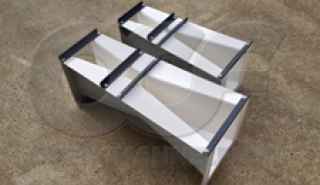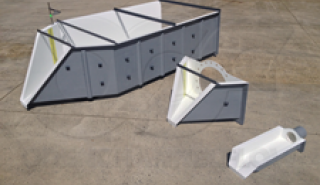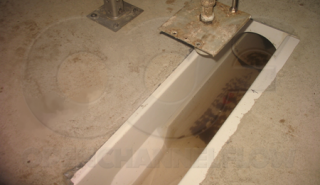In order to better understand flumes and how they can be applied to the measurement of flows in open channels it is useful to understand the sections of a flume and their specific functions.
A flume generally consists of three distinct sections.
- Converging / inlet / approach (dark blue)
- Throat (grey)
- Diverging / exit / discharge (light blue)

The converging section serves to collect and channel the flow into the throat of the flume. The primary point of measurement, ha, is always located in the converging section. Under free-flow conditions, only a single depth measurement is necessary at ha to determine the flow rate through the flume. Adherence to specified dimensions is important in the converging section of a flume as changes in the cross-sectional area at the primary point of measurement, ha, directly impact a flume’s overall accuracy.
The throat is the narrowest portion of a flume and it is here where the flow is accelerated from sub- to super-critical flow by means of:
- Change in elevation (RBC)
- Contraction of the side walls (Cutthroat, HS / H/ HL, Montana, Trapezoidal)
- Both (Parshall, Palmer-Bowlus)
For select flumes (Cutthroat, HS / H / HL, and Montana) the throat may have zero length – being formed simply by a transition from the converging section directly to the diverging section (Cutthroat) or formed by the constriction of the converging section (HS / H / HL and Montana). For flumes with extended throats, the secondary point of measurement, Hb, may be located in the throat (Parshall). As with the converging section, adherence to specified dimensions is critically important in the throat of a flume.
To minimize downstream scour and expand the flow back into the channel, flumes may have a diverging section. Diverging sections are not strictly necessary and not all flume types posses one (HS / H / HL and Montana). The secondary point of measurement may be located in the diverging section (Cutthroat and Trapezoidal). Unlike the converging and throat sections, the diverging section dimensions, while important, are not as critical as the section primarily serves the purpose of energy recovery and transition of the flow back into the channel.






